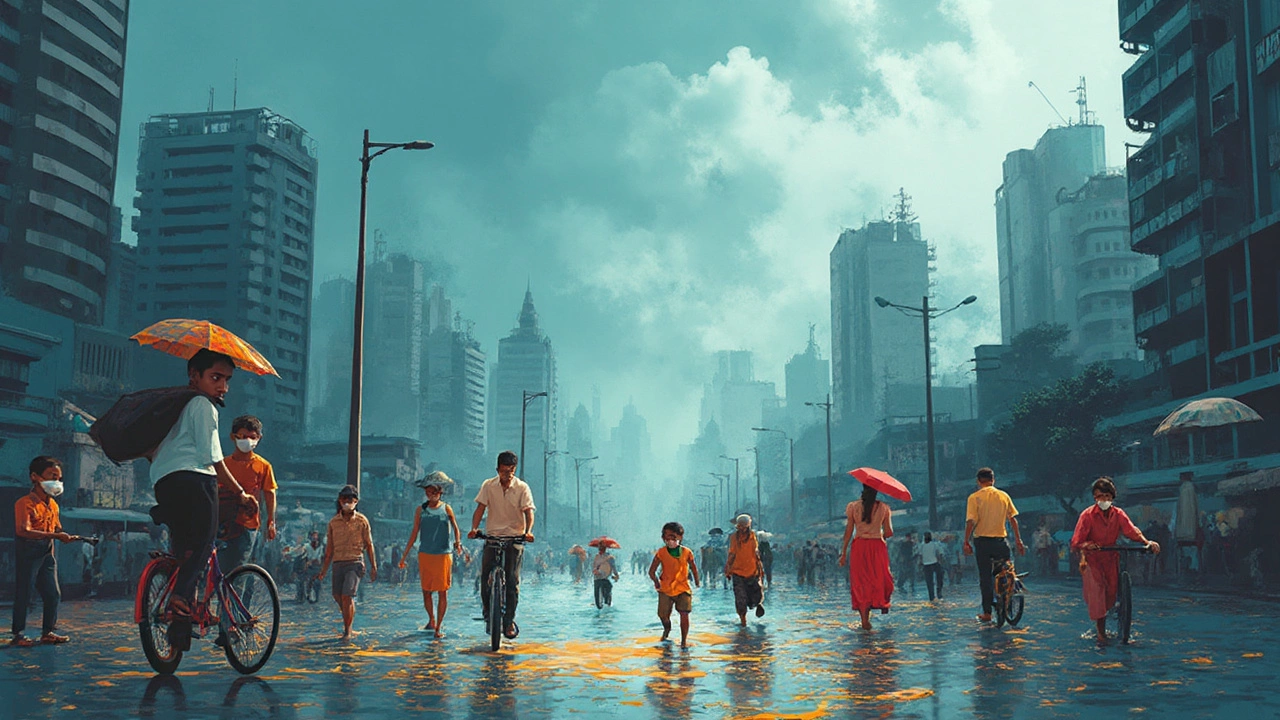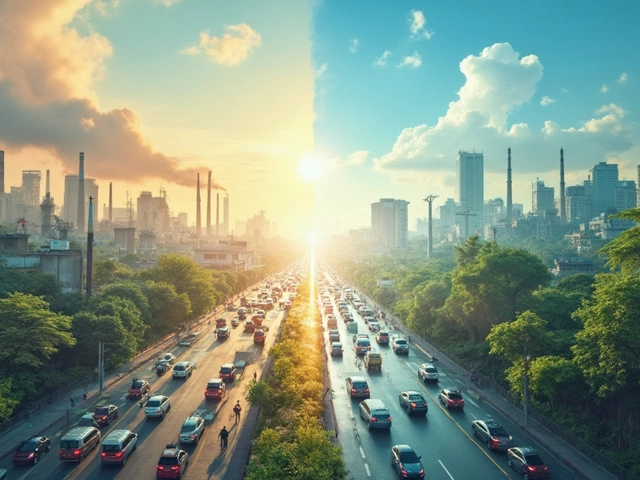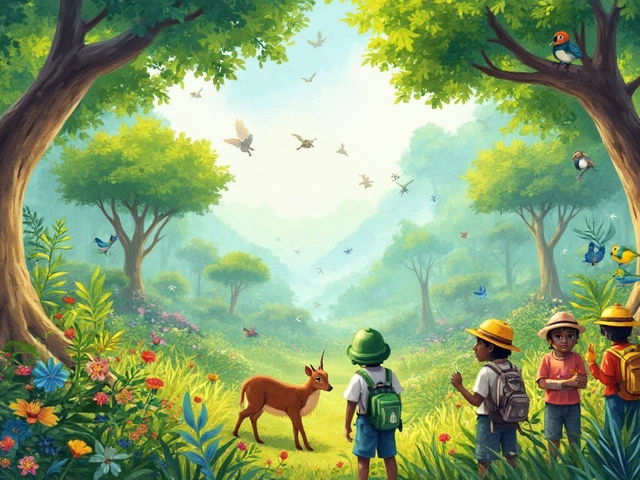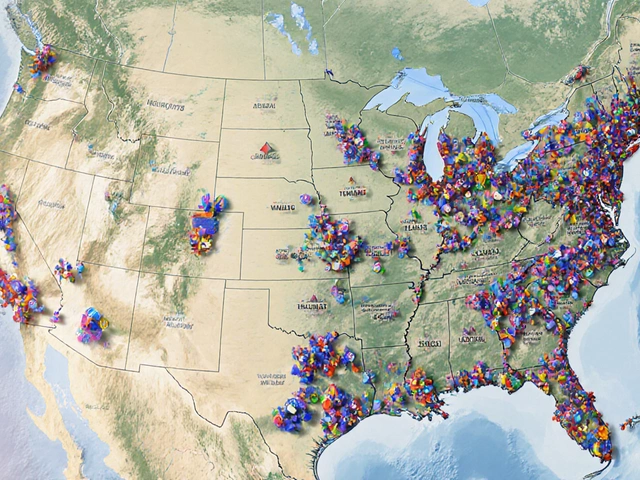Not many things can threaten every living thing on Earth at the same time, but climate change does exactly that. It's more than just warmer summers; it's wildfires wiping out forests, droughts turning farms to dust, and heat waves putting entire cities at risk. And here's the kicker: it’s not slowing down. The last two years have seen the hottest global temperatures ever recorded, and nine out of the ten warmest years have happened since 2014. That's not a coincidence—it's a warning sign.
If you’re worried about vanishing wildlife or wondering why food prices keep climbing, it all links back to the way climate change is throwing life out of balance. Polar bears scrambling for ice, coral reefs turning white and lifeless, and even common birds like sparrows and swifts struggling to find food—these changes are happening right now. It isn’t about the distant future or distant countries. It’s about every ecosystem, from rainforests to your own backyard, facing threats that didn’t exist a generation ago.
- Why Climate Change Tops the Threat List
- How Fast Is the World Heating Up?
- Wildlife and People: The Double Hit
- Feedback Loops That Make It Worse
- What Environmental Groups Are Doing
- Everyday Changes That Really Help
Why Climate Change Tops the Threat List
This isn’t about just weather getting weird. It’s about a real, ongoing crisis that affects every corner of our planet. Out of all the problems facing life on Earth, climate change messes with everything at once—heat, water, food, shelter, and survival for millions of species, including us.
Let’s get into the details. Greenhouse gases—mainly carbon dioxide from burning oil, coal, and gas—trap heat in the atmosphere. This doesn’t just make things warmer. It melts glaciers, raises sea levels, fuels stronger storms, and pushes heatwaves to record highs. Scientists tracked these changes for decades. According to NASA, Earth's average surface temperature has risen by about 1.2°C (2°F) since the late 1800s. That might not sound like much, but it’s enough to disrupt whole ecosystems and food chains.
We’re even seeing deadly impacts play out now. Take countries like India, where extreme heatwaves last year pushed temperatures beyond 49°C (120°F), causing hundreds of deaths and crop failures. In California and Australia, wildfires aren’t just more common—they’re bigger and burn longer. Even oceans are affected. The past year, the world’s oceans hit the highest surface temperatures ever recorded, endangering fish, coral reefs, and food supplies for millions of people.
If you want to see how wide-reaching climate change is, check out this table of key impacts:
| Impact Area | Recent Facts (2024-2025) |
|---|---|
| Heatwaves | 2024 saw the most extreme heatwave in Europe—temperatures reached up to 47°C (116°F) |
| Melting Ice | Antarctica lost 150 billion tons of ice per year since 2020 |
| Oceans | Global ocean temperatures at record highs, coral bleaching events up 50% since 2019 |
| Wildlife Extinctions | Species extinction risk rose by 20% in a decade, according to IUCN |
| Food Security | Major crop yields (wheat, rice) dropped 10-15% in heatwave-hit regions |
No other threat moves this fast or hits so many things at once. Pandemics and wars are serious, but climate change is permanent and global. Plus, every bit of warming that happens now is tough to reverse later.
Bottom line? It’s already shaping the future of life, and it affects what your food costs, where you can safely live, and whether we lose species forever. That's why it tops the list—for environmental groups, scientists, and for anyone who cares about what’s next.
How Fast Is the World Heating Up?
If it feels like the weather’s been extra weird lately, you’re not imagining things. Climate change is speeding up, and scientists say it’s happening way faster than what’s considered natural. Since 1880, the average global temperature has gone up about 1.2°C (that’s over 2°F). Doesn’t sound huge, right? But even this “small” change is shaking up weather everywhere.
Here’s what's even wilder—the rate’s picking up. The last decade saw temperatures rise almost twice as fast as the fifty years before. According to NASA, nine of the ten warmest years on record have happened since 2014. And 2024 wasn’t just a new record, it left the old ones in the dust—by a whole tenth of a degree, which is huge when you’re talking global averages.
| Year | Global Temp Change (°C) | Notes |
|---|---|---|
| 1880 | +0.0 | Reference year (pre-industrial) |
| 1980 | +0.4 | Clear warming trend starts |
| 2000 | +0.6 | Extreme weather gets more common |
| 2014 | +0.8 | Start of record-breaking streak |
| 2024 | +1.2 | Warmest year ever recorded |
If you think this is just a “natural cycle,” scientists have actually checked that from every angle. The spike matches up almost exactly with skyrocketing CO2 from burning fossil fuels. There’s no mystery here—it’s us. The world’s heating up, and if things don’t change, we’re on track to blow past 1.5°C before 2035, which climate experts say is a real tipping point.
So, why does this matter for daily life? Hotter air means oceans get warmer, ice melts faster, and heatwaves hit harder. It’s like loading the dice—not every summer is toastier, but the chances are way up. If it feels relentless, that’s because the numbers back it up.
Wildlife and People: The Double Hit
Climate change is like a double whammy—it’s knocking out both wildlife and people at the same time. Extreme weather and rising average temps are pushing tons of animals to their limit. According to the World Wildlife Fund, global wildlife populations have dropped by about 69% since 1970. That’s not just sad—it messes with entire food chains and even local economies that count on things like fishing and farming.
Here’s something wild: coral reefs, which support roughly 25% of marine life, have seen massive bleaching events because seawater is getting way too warm. No reefs, no fish. No fish, no food for millions of people. It’s one tough circle. And we’re seeing plants, insects, birds, and mammals try to move to cooler places—but lots of them simply can’t keep up or find new homes.
The hit isn’t just for animals. People everywhere are feeling the heat—literally. Record temperatures are making heatstroke and dehydration much more common, especially for kids, seniors, and outdoor workers. Wildfires in places like Canada, Australia, and California are burning down homes and filling the air with smoke, causing dangerous air quality.
| Year | Major Wildlife Incident | Major Human Impact |
|---|---|---|
| 2016 | 93% of Australia’s Great Barrier Reef faced coral bleaching | 38 million people affected by drought in southern Africa |
| 2020 | Bushfires killed or displaced 3 billion Australian animals | California wildfires destroyed over 10,000 buildings |
| 2022 | Bird flu outbreaks linked to shifting migration patterns | Europe saw 60,000+ heat-related deaths during summer |
Farming isn’t safe either. Unpredictable seasons and longer droughts mean failed harvests and higher prices at the store. That’s especially tough for low-income families and small farmers. Some folks end up having to leave their homes for good—think entire island nations disappearing under the rising ocean or villages abandoned because growing food gets impossible.
- Stay hydrated and avoid going out during extreme heatwaves, especially at midday.
- If you live in wildfire-prone areas, keep an emergency kit and know your evacuation routes.
- Support wildlife by planting native trees and flowers, which offer food and shelter to local species.
- Reduce meat and dairy (just try one plant-based meal per week); this lowers pressure on land and keeps emissions down.
- Talk with kids and friends about why climate change matters. Awareness pushes action.
Bottom line: people and wildlife are both feeling the effects of climate change. Everything’s connected. If one domino falls, the others are right behind. Working together—even with small steps—makes a bigger difference than most think.

Feedback Loops That Make It Worse
Here’s where things get trickier—climate change isn’t just a straight line. It actually creates feedback loops, which means it speeds itself up in ways that are hard to stop. This is one of the biggest reasons why climate change is so dangerous for everyone.
Take melting Arctic ice, for example. Normally, white ice reflects heat from the sun back into space. But as the ice melts, it exposes darker ocean water, which soaks up more heat. This makes the water even warmer, so more ice melts. It’s basically a vicious circle that’s ramping up temperatures way faster than anything we’ve seen before.
Another classic feedback loop? Thawing permafrost. Permafrost is frozen ground in places like Siberia and Northern Canada. As it thaws, it releases methane—a greenhouse gas that's much more powerful than carbon dioxide. Methane traps heat, which makes the planet even warmer, thawing even more permafrost and releasing even more gas.
Then there are the forests. When forests burn because of drier conditions or get cut down, they stop pulling carbon dioxide from the air and actually start releasing it. That extra carbon keeps the heat rising, which leads to more wildfires and even less healthy forest land to soak up emissions. It’s like trying to put out a fire while someone keeps dumping gasoline on it.
The faster these feedback loops spin out of control, the harder it is to fix the problem. That’s why experts keep saying we need to act sooner rather than later—so we don’t let these cycles run wild and make things even worse.
What Environmental Groups Are Doing
When it comes to fighting climate change, environmental groups aren't sitting on the sidelines. They're busy running targeted campaigns, backing scientific research, and pressuring governments and big businesses to make real changes. Take Greenpeace, for example—they’ve led protests that helped push countries to stop using coal. World Wildlife Fund (WWF) works in over 100 countries to protect forests, oceans, and endangered animals, and they’re heavily involved in restoration projects that pull carbon out of the air.
Sierra Club, one of the oldest environmental organizations in the U.S., has played a massive role in closing over 357 coal power plants since 2010. That’s not just a win for the planet—it’s saved hundreds of millions of tons of carbon emissions. Friends of the Earth takes a legal approach, actually suing polluters and governments that break environmental promises. This isn’t about making noise—it’s about getting results.
Here’s a quick look at what’s working:
- Backing renewable energy by pushing for solar and wind farms
- Restoring habitats like rainforests and peatlands to trap carbon
- Lobbying for stricter laws and carbon taxes on heavy polluters
- Educating the public about choices that matter, like reducing meat or using public transport
Environmental groups also team up with local communities—think rainforest tribes in the Amazon or fishing villages in Southeast Asia—because people living closest to nature usually know best how to protect it.
Check out this breakdown of the impact in recent years:
| Group | Main Focus | Key Result (2015-2024) |
|---|---|---|
| Greenpeace | Campaigns & Protests | Helped stop 22 new coal plants globally |
| WWF | Conservation | Restored 5.6 million hectares of forest |
| Sierra Club | Clean Energy | Facilitated closure of 357 coal power plants |
| Friends of the Earth | Legal Action | Won 18 major lawsuits against polluters |
The bottom line? These groups aren’t just talking—they’re cutting emissions, saving habitats, and making it tough for anyone to ignore the urgency of climate change. They’re proof that organized action really can force a shift.
Everyday Changes That Really Help
If you feel powerless when you hear about climate change, you’re totally not alone. But here’s something surprising: scientists found that everyday people, not just big companies, can help speed up solutions if enough of us act. You don’t need to quit your job and become a full-time activist to make a dent.
"Small actions add up, especially with climate change. If millions make smarter choices, we bend the curve — faster than many think possible." — Christiana Figueres, former UN climate chief
Just switching a few habits at home and in your community starts a ripple that matters. A 2023 study in Nature showed that if wealthy countries reduced household food and energy waste by half, they’d shave off about 9% of their total emissions. That’s a huge chunk from regular choices.
- Eat less meat — Swapping beef for beans or chicken even once or twice a week slashes greenhouse gases fast. Beef, for example, pumps out over 7 times more emissions per serving than plant-based proteins.
- Lower your power use — LED bulbs, unplugging stuff you don’t use, and smarter heating/cooling can trim your home’s emissions by up to 20% a year.
- Change your commute — Walking, biking, or using public transit instead of driving just two days a week cuts carbon from your daily routine. Electric cars save even more — over 50% less carbon if your local grid is using renewable energy.
- Support clean energy and local food — Voting for community solar or wind projects, or shopping at farmer’s markets, keeps your cash with green solutions. Some electricity providers let you pick 100% renewable sources. That’s direct impact.
- Talk about it — Let your friends and family know why you’re making these swaps. A Yale survey found that when people talk climate with peers, more folks join in. No preachiness needed, just honest chats.
Curious how the biggest day-to-day changes stack up? Here’s a helpful look:
| Change | Average Emissions Cut (kg CO2/year) |
|---|---|
| Switching to LED bulbs (whole house) | 450 |
| Skipping red meat once a week | 180 |
| Biking or walking short commutes twice a week | 220 |
| Home heating/cooling tune-up | 300 |
| Switching to renewable energy plan | up to 1,100 |
Habits can seem too tiny to matter, but together, they pack a punch. Environmental groups always say: no single action is magic, but action is what hope looks like. And it’s contagious, in the best way.








